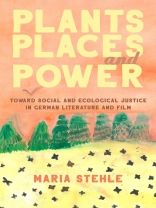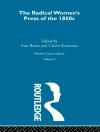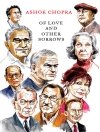Examines portrayals of plants and landscapes in recent German novels and films, addressing the contemporary forms of racism, nationalism, and social and ecological injustice that they expose.
Plants, Places, and Power is a study of plants and landscapes in and beyond contemporary German-language literature and film. Stories and images of plants and landscapes in cultural productions are key sites for exposing the violent legacies of German colonialism and Nazism and for addressing contemporary forms of racism, nationalism, social and ecological injustice, and gender inequity. The novels and films discussed in this book address these key political issues in contemporary Europe and propose alternative ways for people to live together on this planet by formulating more inclusive and sustainable concepts of belonging.
The book has two main objectives: to offer new approaches to contemporary literature and film from an intersectional, ecological perspective, and to form a canon. All of the works focused on, from Mo Asumang’s documentary film
Roots Germania (2007) through Faraz Shariat’s
Futur Drei (2020) and from Yōko Tawada’s novel
Das nackte Auge (2004) to Saša Stanišić’s
Herkunft (2019), are by female artists, artists of color, artists who have experienced forced displacement, and/or queer artists. In five chapters, Maria Stehle reads artworks in reference to ecological systems, develops forms of eco- and social criticism based on art, and intertwines ecological and critical thinking with questions of form, affect, and aesthetics.
Cuprins
Preface and Acknowledgments: People and Places
Introduction: Living in Relation: Plants, Place-Making, and Social Justice
1: Landscapes: Infrastructures, Power Topographies, and Feral Gardens in Juli Zeh’s
Unterleuten (2016), Valeska Grisebach’s
Western (2017), and Anna Sofie Hartmann’s
Giraffe (2019)
2: Uncanny Gardens: Migration and Belonging in Dörte Hansen’s
Altes Land (2015) and Saša Stanišić’s
Herkunft (2019)
3: Trees, Roots, and Anti-Racism in Ilija Trojanow’s
Nach der Flucht (2017), Mo Asumang’s
Roots Germania (2007) and
Die Arier (2014), and Elliot Blue’s
Home? (2018)
4: Defiant Flowers and Manufactured Happiness in Vera Chytilová’s
Daisies (1966), Pipilotti Rist’s
Pepperminta (2009), and Jessica Hausner’s
Little Joe: Glück ist ein Geschäft (2019)
5: Senses, Queer Interrelations, and Decolonial Geographies in Yōko Tawada’s
Das nackte Auge (2004), Shari Hagen’s
Auf den zweiten Blick (2012), and Faraz Shariat’s
Futur Drei (2020)
Epilogue: Erasures and Different Stories
Bibliography
Index
Despre autor
MARIA STEHLE is Professor of German and Cinema Studies at the University of Tennessee, Knoxville.












